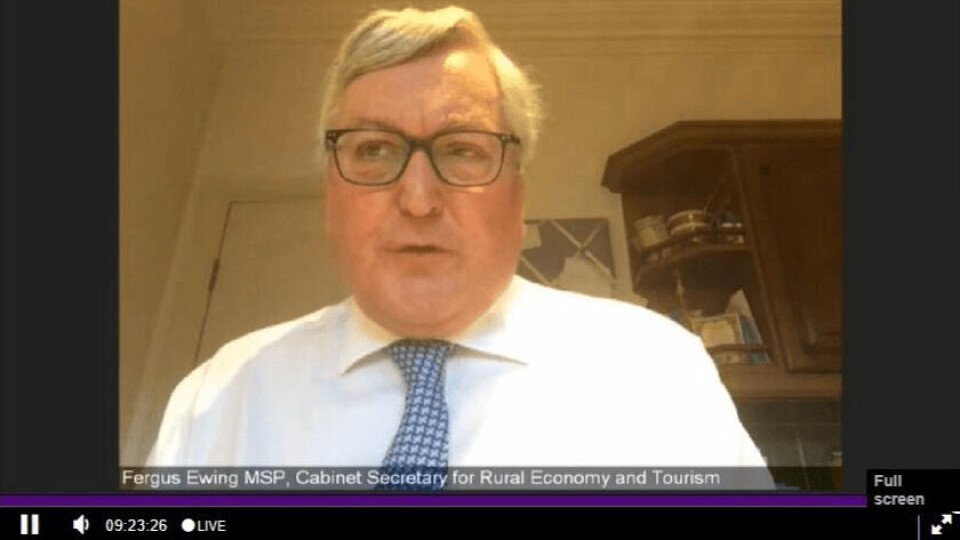
Scotland: Weekly lice reporting to be mandatory
The weekly reporting of sea lice numbers at Scottish salmon farms will become mandatory from March next year.
Fish farmers will have a legal duty to report numbers of female lice at each farm a week in arrears, with the figures then being made publicly available on a government website.
Rural economy secretary Fergus Ewing revealed plans for mandatory lice reporting today while updating the Scottish Parliament’s Rural Economy and Connectivity (REC) Committee on progress made following the committee’s inquiry into the industry in 2018.
Put into law this month
The minister said a statutory instrument enacting the new rules on sea lice reporting would be laid before Parliament before the end of December.
Alastair Mitchell, deputy director of aquaculture and recreational fisheries for Marine Scotland, then gave MSPs more details on the lice reporting plan, which is the result of work undertaken by the salmon industry and government under the Farmed Fish Health Framework. More frequent and accessible lice reporting was also recommended by the REC Committee in a report resulting from the 2018 inquiry.
“Our regulation, which should come to Parliament before the end of December, puts on a statutory footing the requirement for each farm to report on a weekly basis in arrears on the numbers of female lice found on the farmed fish therein from a sample which is agreed as good practice,” said Mitchell.
Significant change
“That regulation will come into force in March 2021, at which point, in addition to our Fish Health Inspectorate being aware of all of the numbers, there will be a public face to that so that people can interrogate at a farm level what’s happening in terms of sea lice performance one week in arrears.
“You are looking at a fortnight time lag, approximately, which is a significant change and improvement on previously. That will start on the Marine Scotland website but will move on to the Scotland’s Aquaculture website in due course, once we’ve got the IT fixed.”
The Scottish Salmon Producers’ Organisation (SSPO), which represents nearly all of Scotland’s salmon farming companies, voluntarily reports lice numbers but the figures as not as timely as the new rules will demand. The SSPO gives lice figures for a whole month at a time, and the statistics are published around a month after the last day of the month being reported on. The last block of figures, for October, were published on Monday.
SSPO chief executive Tavish Scott said: “Over the past two years, the salmon sector has made considerable progress in its public reporting of data. SSPO publishes monthly farm-by-farm sea lice reports as part of a full report of fish health and welfare in the sector. This complements the long-standing reporting to regulators and government and provides data for those with an academic interest to understand the actions taken in the shared marine environment.
“In order to understand and deliver practicable, evidence-based actions to support the conservation of wild salmon, it is also vitally important that the recreational fisheries sector publishes all of its data associated with wild salmon.
“The salmon farming sector will continue to develop ways in which to demonstrate and report on its sustainable operations.”
Wrasse controls
Today’s news follows an announcement yesterday that mandatory controls over the harvesting of wild wrasse for use as cleaner fish to manage sea lice in salmon cages will come into effect from May next year.
Under the new rules, wrasse fishers will have to meet certain criteria, show they have an appropriate relationship with an aquaculture business and have a proven track record to obtain a permit for harvesting wild wrasse.
The Scottish salmon farming sector committed to voluntary control measures for the live capture of Scottish wild wrasse for salmon farms in 2018. Increasing numbers of wrasse are also being bred in captivity for use in farms.























































